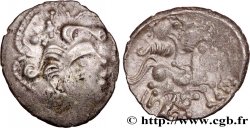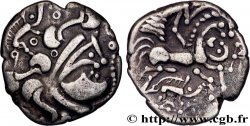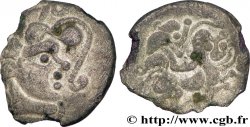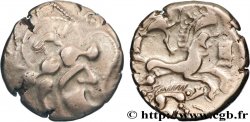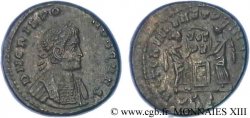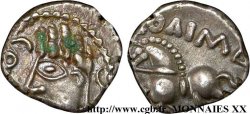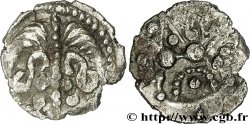bga_479769 - GALLIA - BAÏOCASSES (Area of Bayeux) Statère d’argent au sanglier et à la lyre
Количество
Добавить в корзину

Тип Statère d’argent au sanglier et à la lyre
Дата: IIe - Ier siècle AC.
Монетный двор / Город: Bayeux (14)
Металл: billon
Диаметр: 21 mm
Ориентация осей монеты: 12 h.
Вес: 5,28 g.
Редкость: R3
Комментарии о состоянии
Bel exemplaire au style inhabituel dans le traitement du portrait au droit. Joli revers. Patine grise
Ссылки в каталоге: :
Лицевая сторона
Аверс: легенда: ANÉPIGRAPHE.
Аверс: описание: Tête humaine à droite, les cheveux en grosses mèches ; un sanglier dans la chevelure ; cordon perlé enroulé devant le visage.
Обратная сторона
Реверс: легенда: ANÉPIGRAPHE.
Реверс: Описание: Cheval androcéphale galopant à droite ; une lyre entre les jambes ; restes de l'aurige au-dessus du dos ; vexillum devant la tête.
Комментарий
Ce statère s’intègre dans le monnayage tardif de la Basse Normandie, du Cotentin et de Jersey, sans pour autant correspondre exactement à aucune des monnaies publiées !
Le type à la lyre est traditionnellement plutôt attribué aux Abrincatui, mais le style ne leur correspond pas. Comme pour le statère aux deux lyres, n° 662 de MONNAIES 53, ne serait-il pas possible que ce statère soit un "mélange" de Baïocasses et d'Abrincatui, deux peuples mitoyens ?.
This stater is part of the late coinage of Lower Normandy, Cotentin and Jersey, without corresponding exactly to any of the published coins! The type with the lyre is traditionally attributed to the Abricatui, but the style does not correspond to them. As for the stater with two lyres, no. 662 of MONNAIES 53, would it not be possible that this stater is a “mixture” of Bayocasses and Abrincatui, two adjoining peoples?
Le type à la lyre est traditionnellement plutôt attribué aux Abrincatui, mais le style ne leur correspond pas. Comme pour le statère aux deux lyres, n° 662 de MONNAIES 53, ne serait-il pas possible que ce statère soit un "mélange" de Baïocasses et d'Abrincatui, deux peuples mitoyens ?.
This stater is part of the late coinage of Lower Normandy, Cotentin and Jersey, without corresponding exactly to any of the published coins! The type with the lyre is traditionally attributed to the Abricatui, but the style does not correspond to them. As for the stater with two lyres, no. 662 of MONNAIES 53, would it not be possible that this stater is a “mixture” of Bayocasses and Abrincatui, two adjoining peoples?







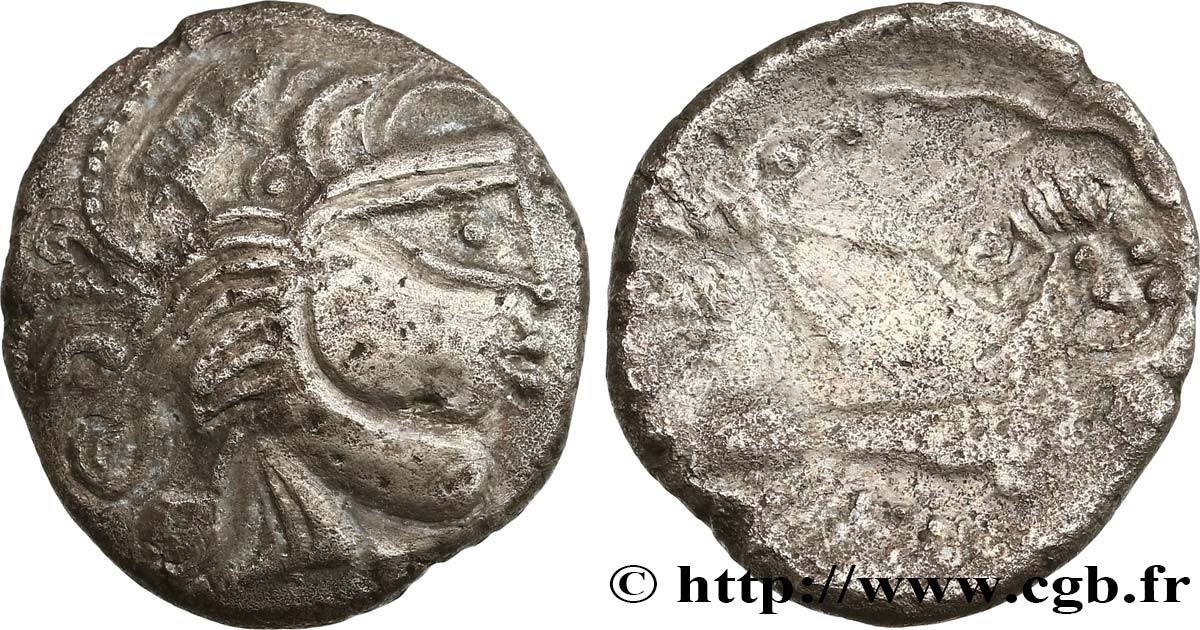
 Cообщить об ошибке
Cообщить об ошибке Распечатать страницу
Распечатать страницу Отправить мой выбор
Отправить мой выбор Задать вопрос
Задать вопрос Consign / sell
Consign / sell
 Информация
Информация